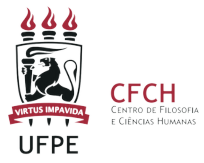Contributions of the 3d model of hydrographic bowl for the education of geography
DOI:
https://doi.org/10.51359/2594-9616.2019.240481Keywords:
Dinâmica Fluvial, QGis, ensino de geografia, Itaara/RSAbstract
The reference work aims to discuss the 3D model of the Arroio Manuel Alves Basin, located in Itaara / RS, generated by QGis as a didactic resource. For the accomplishment of this research three methodological stages became relevant. Firstly, the definition of the theoretical framework for the investigation and survey of primary and secondary data was based on searches in printed and digital media of documents that approached the theme and concepts of hydrographic basin, 3D model and referring area to be approached, as well as cartographic basis for the elaboration of the model; The result was a 3D image of the Manuel Alves Arroyo Basin, which will be used to address themes such as: Water cycle on the planet -theoretical and methodological aspects; Surface runoff and urbanization; Uses and abuses of water; with this it is concluded that this 3D model contributes as a didactic resource to generate discussions about the use of water resources from differentapproaches.
References
BECKER, Elsbeth Léia Spode; NUNES, Márcia Piccin. Relevo do Rio Grande do Sul, Brasil, e sua representação em maquete. Revista Percurso – NEMO, Maringá, v. 4, n. 2 , p. 113- 132, 2012. Disponível em: http://ojs.uem.br/ojs/index.php/Percurso/article/viewFile/18060/10215. Acesso em 19 de janeiro de 2019.
ERSDAC. Earth Remote Sensing Data Analysis Center (ASTER GDEM). Disponível em: http://www.gdem.aster.ersdac.or.jp/. Acesso em: 20 de janeiro de 2019.
JENNINGS, G; ANDERSON, T; DORSET, M.MITCHEL, J. Step Forward iPad Pilot Project. Melbourne, Vic: The University of Melbourne. (2010). Disponível em: https://docs.google.com/file/d/0B5lvGCuvwcgXZWZkYmEzNDMtNmQ1OS00NmRhLTlhYmIt OTU5NmVhYWJlNDA1/edit?hl=en&pli=1. Acesso em 13 outubro de 2018.
MORAES, Antonio Carlos Robert. Geografia: Pequena História Critica. Editora Hucitec. São Paulo, 1988. 8ª Edição.
MOURA, A. Apropriação do telemóvel como ferramenta de mediação em mobile learning: estudos de casos em contexto educativo. Doutoramento em Educação, na área de especialização em Tecnologia Educativa, Universidade do Minho. (2010). Disponível em: https://repositorium.sdum.uminho.pt/bitstream/1822/13183/1/Tese%20Integral.pdf. Acesso em 20 de dezembro de 2018.
MOURA, Luana Honório. As Geotecnologias aplicadas ao ensino de Geografia como abordagem metodológica para o Ensino Médio. Monografia (para obtenção do título de especialista em Ensino de Geografia) Universidade Estadual da Paraíba-UEPA, Campina Grande. 37.p, 2018. Disponível em: http://dspace.bc.uepb.edu.br/jspui/bitstream/123456789/17507/1/PDF%20-%20Luana%20Hon%C3%B3rio%20de%20Moura.pdf. Acesso em 19 de janeiro de 2019.
NASA. National Aeronautics and Space Administration. Estados Unidos. Disponível em: http://asterweb.jpl.nasa.gov/ . Acesso em: 20 de janeiro de 2019.
NETTO, A. L. C. Hidrologia de encostas na interface com a Geomorfologia. In: Antônio José Teixeira Guerra e Sandra Baptista da Cunha (Org.). Geomorfologia: uma atualização de bases e conceitos. Rio de Janeiro: Bertrand Brasil, 1994. p. 93 – 148.
RODRIGUES, Tiago Lima; Debiasi, Paula; De Souza, Rodrigo. Floriano. Avaliação da adequação dos produtos ASTER GDEM no auxílio ao mapeamento sistemático brasileiro. In: III Simpósio Brasileiro de Ciências Geodésicas e Tecnologias da Geoinformação. Anais... Recife/PE. 27-30 de julho de 2010. p. 1-5. Disponível em: https://www3.ufpe.br/cgtg/SIMGEOIII/IIISIMGEO_CD/artigos/CartografiaeSIG/Cartografia/A_17.pdf. Acesso em 20 de janeiro 2019.
SCHNEIDER,Cristina. Recuperação em áreas de Incompatibilidade Legal de uso de terra: o caso da bacia hidrográfica do Arroio Manoel Alves, Itaara,RS.2010 Dissertação (mestrado em geografia) Universidade Federal de Santa Maria, Santa Maria,2010.
SCHUNEMANN, Fabrício Fiorani; NOVACOVCKI, Cleber. Avaliação visual de modelos 3D gerados através de produtos ASTER GDEM, SRTM e carta topográfica em relação a fotos do relevo. In: XV Simpósio Brasileiro de Sensoriamento Remoto - SBSR, Anais..., Curitiba, PR, Brasil, 30 de abril a 05 de maio de 2011, INPE p.5737-5744. Disponível em: http://marte.sid.inpe.br/col/dpi.inpe.br/marte/2011/07.05.19.13/doc/p1252.pdf. Acesso em: 20 de janeiro de 2019.
SODRÉ, Nelson Werneck. Introdução à Geografia. Geografia e Ideologia. Editora Vozes. Petrópolis, 1986. 5ª Edição.
SUNG, Y.T, HOU, H.-T., LIU, C.-K., CHANG, K.-E.(2010). Mobile guide system using problem-solving strategy for museum learning: a sequential learning behavioral pattern analysis. Journal of Computer Assisted Learning, 26(2), p.106-115. http://blackwellsynergy.com/doi/abs/10.1111/j.1365-2729.2010.00345.x
TUCCI, C. E. M. 1997. Hidrologia: ciência e aplicação. 2.ed. Porto Alegre: ABRH/Editora da UFRGS, 1997.
TUNDISI, J. G.. Água no século XXI: enfrentando a escassez. São Paulo: RiMa, IIE, 2003.
USGS. United State Geological Service. Estados Unidos, 2012. Disponível em: https://lpdaac.usgs.gov/ . Acesso em: 20 de janeiro de 2019.
Downloads
Published
How to Cite
Issue
Section
License
Copyright (c) 2021 Letícia Ramires Corrêa, Tuane Telles Rodrigues

This work is licensed under a Creative Commons Attribution 4.0 International License.
Authors who publish with this journal agree to the following terms:- Authors retain copyright and grant the REVISTA ENSINO DE GEOGRAFIA (RECIFE) right of first publication with the work simultaneously licensed under a Creative Commons Attribution NonCommercial International 4.0 (CC BY-NC) that allows others to share the work with an acknowledgement of the work's authorship and initial publication in this journal.
- Authors are able to enter into separate, additional contractual arrangements for the non-exclusive distribution of the journal's published version of the work (e.g., post it to an institutional repository or publish it in a book), with an acknowledgement of its initial publication in this journal.
- Authors are permitted and encouraged to post their work online (e.g., in institutional repositories or on their website) prior to and during the submission process, as it can lead to productive exchanges, as well as earlier and greater citation of published work.



